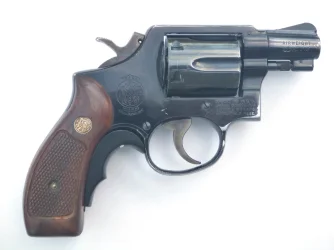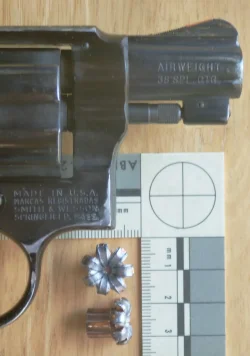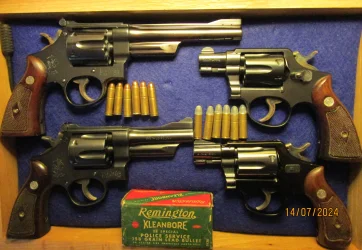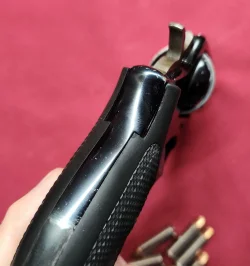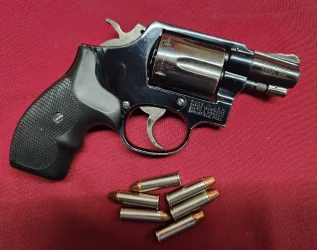I have two model twelves ,
a dash 2 SB flat latch snub thats like new and a high mileage dash three that has been in my carry rotation since I bought it used 30 years ago, it was a SB but has been Rb converted for better concealment, the story was it was a former LEO gun and definately was back to the factory as evidenced by its serial being stamped into the cylinder face .
The previous owner added the red ramp.
An interesting side note, about the model twelve is that it is the only sw k frame that briefly had the flat latch (as found on j frames during the same time period).
Ps
Two other model twelve grip options are fitting a set of pre war service stocks or post war reproductions,
Or if you can find a set of the old uncle mike's two piece rubber over mold grips they fit very well as evidence below on the 12-3.



